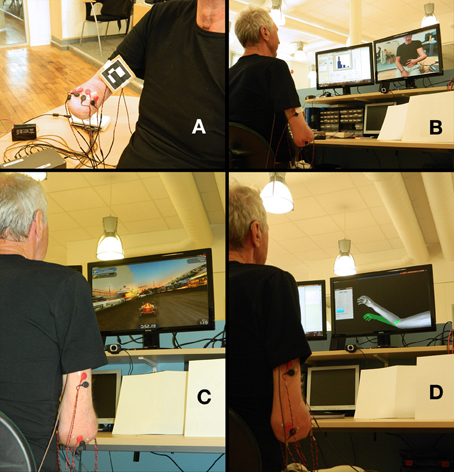In Sweden, around 50 arm amputations and 500 leg amputations are performed each year. Researchers say roughly 70 percent of people amputated on feel pain where their limbs once were, a phenomenon known as Phantom Limb Pain.
Now researchers at Gothenburg's Chalmers University have turned to virtual reality computer games in an effort to help those suffering.
The computer games, in which the player simulates movements that are broadcast on the screen, is a sophisticated version of the mirror therapy discovered in the nineties in which patients saw their other arm or leg as a reflection of their remaining limb.
But even though mirror therapy is cheap and easy, this more primitive approach is limited as it doesn't work for every amputee, and is impossible for dual-amputees.
Max Ortiz Catalan, a Mexican researcher and PhD candidate at Chalmers University, explained that there are still many grey areas when it comes to why missing limbs can cause pain.
"No one knows why Phantom Limb Pain is caused," he told The Local.
"The leading theory is that the brain map of your own body changes after an amputation. This means that amputees, whether it's a limb, breast, nose… anything, they can suffer of phantom pain. What we are trying to do is potentially restore the original map, by allowing the patient to use the missing limb, and therefore get rid of the pain."
Researchers had the idea to use virtual reality games to allow patients to use their limbs again. Their first guinea pig was a man missing his right arm below the elbow. He was rigged up to a car racing game where he found he could use his arm again by turning what would have been his right wrist on the steering wheel (see video below).

(A) Surface electrodes and a fiduciary marker placed on stump. (B) Environment captured by webcam and displayed on computer screen. (C) Patient playing a racing game by phantom motions. (D) Patient using the Target Achievement Control (TAC) test as a rehabilitation tool.
The patient could control the car because the relevant motor areas in the brain were reactivated, while the man's brain was tricked into believing his arm was still there via the visual feedback on the screen. More importantly, his pain which had been constant and extreme for decades was drastically reduced.
"He was extremely happy, as you could imagine. He hadn't used his arm in 48 years," Ortiz Catalan explained. "And that's exactly why we do the research. It's truly rewarding to see it working like this."
The technology meant that muscle signals from the man's arm stump saw electrical signals in his muscles being sensed by electrodes on his skin. These signals were translated into arm movements using a set of complex algorithms.
With the success of the Gothenburg patient, researchers are now extending their work to three more hospitals in Sweden and a few abroad. Researchers are set to concentrate on "the hardest cases", those being patients who do not respond to traditional methods.
The researchers have also developed a system they aim to release for at-home use. It is currently awaiting approval.


 Please whitelist us to continue reading.
Please whitelist us to continue reading.
Member comments